Pop Culture
Inside the New Opera Reimagining the Singular Life of Hilma af Klint
Besides tracing the Swedish artist's biography, "HILMA" explores the afterlife of her ultra-modern body of work.

Hilma af Klint was a painter and mystic—a woman for whom the earthly plane and existing artistic expression evidently did not suffice. Hers were “big strides,” playwright Kate Scelsa told me, in “leaving representation behind.” So, when Scelsa had the idea of adapting af Klint’s life, she realized she needed ambition and vision equal to that of her subject. “We’re writing about someone who was making abstract, non-traditional work,” she said. “It was important to us to also reinvent whatever we were doing.”
Hence HILMA, a contemporary opera that reimagines af Klint’s life in song and dance. The production won’t just explore the Swedish artist’s biography and spiritual quest, but delve into the enduring afterlife of her body of work. Scelsa wrote the opera alongside composer Robert M. Johanson, with Morgan Green, co-artistic director of the Tony award-winning Wilma Theater in Philadelphia, where the performance is debuting, on directing duties. It is produced in collaboration with New York theater company New Georges.
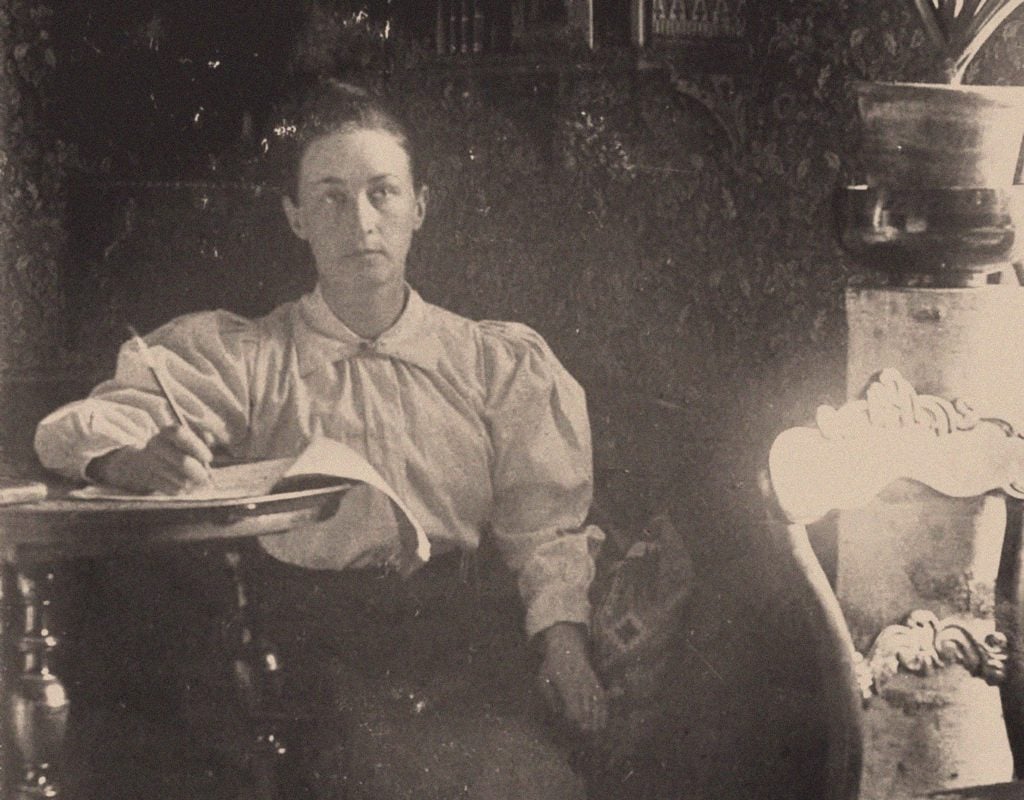
Hilma af Klint, circa 1890. Found in the collection of Courtesy of Stiftelsen Hilma af Klints Verk. Artist Anonymous. Photo: Fine Art Images/Heritage Images via Getty Images.
When af Klint died in 1944, she left behind a trove of abstract, ultra-modern canvases that emerged from her contact with the spiritual world. These mysterious forces, which the painter reached during séances, communicated with her via pictures and set her “commissions,” she claimed. Af Klint produced hundreds of intensely symbolic works that she believed were far ahead of their time, so much so that she stipulated in her will that they be hidden away until 20 years after her death.
Af Klint’s work was unveiled in the ’80s and gained increasing recognition in the 2010s, following exhibitions across Europe. In 2018, the Guggenheim in New York staged “Hilma af Klint: Paintings for the Future,” which drew a record 600,000 visitors and is still the museum’s most popular show. It was there that Scelsa became acquainted with the artist; she found herself drawn to af Klint’s paintings as much as her notebooks in which she recorded her spiritual outings, naming the guides she encountered along the way.
“She was taking this big, magical, spiritual conversation and making it this personal, beautiful thing—humanizing something very mysterious by putting a name on it,” Scelsa said. “Rob and I started writing this piece together a couple years after that because the experience of seeing that show just really stuck with us. It felt like there was something more to discover.”
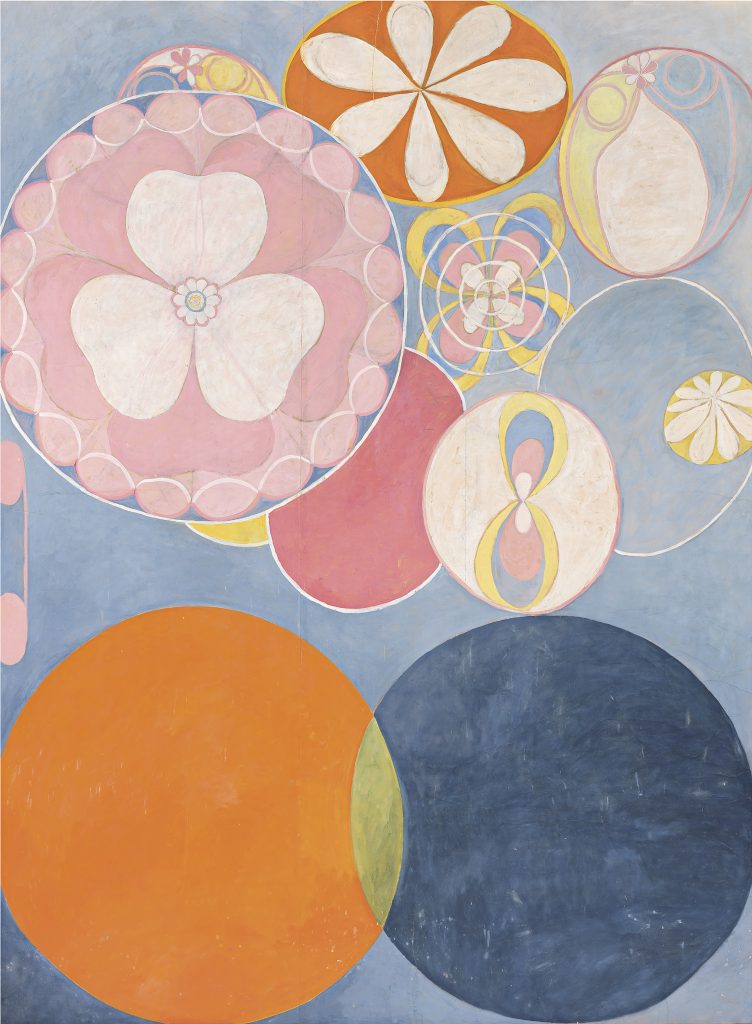
Hilma af Klint, Group IV, No. 2. The Ten Largest, Childhood (1907). Found in the Collection of Courtesy of Stiftelsen Hilma af Klints Verk. Photo: Fine Art Images/Heritage Images/Getty Images.
Scelsa and Johanson were writing at a time when scholarship around af Klint was still surfacing. Besides picking up catalogues and biographies, they worked with Jackie Tileston, artist and professor of fine arts at the University of Pennsylvania, who serves as the production’s dramaturg and offered a line to the translator of af Klint’s notebooks. While the limited amount of research proved somewhat “liberating” for the writers, Scelsa said, the emerging insights called for frequent reconsiderations of the narrative.
“It’s been interesting for me to reckon with the ways in which I was projecting onto her certain ideas about being a feminist or being a woman in an art world of men. Those aren’t quite the terms of her life,” she explained. “Luckily, within the piece, there was space for us to reckon with this idea that maybe she wasn’t quite who at least I thought she was.”
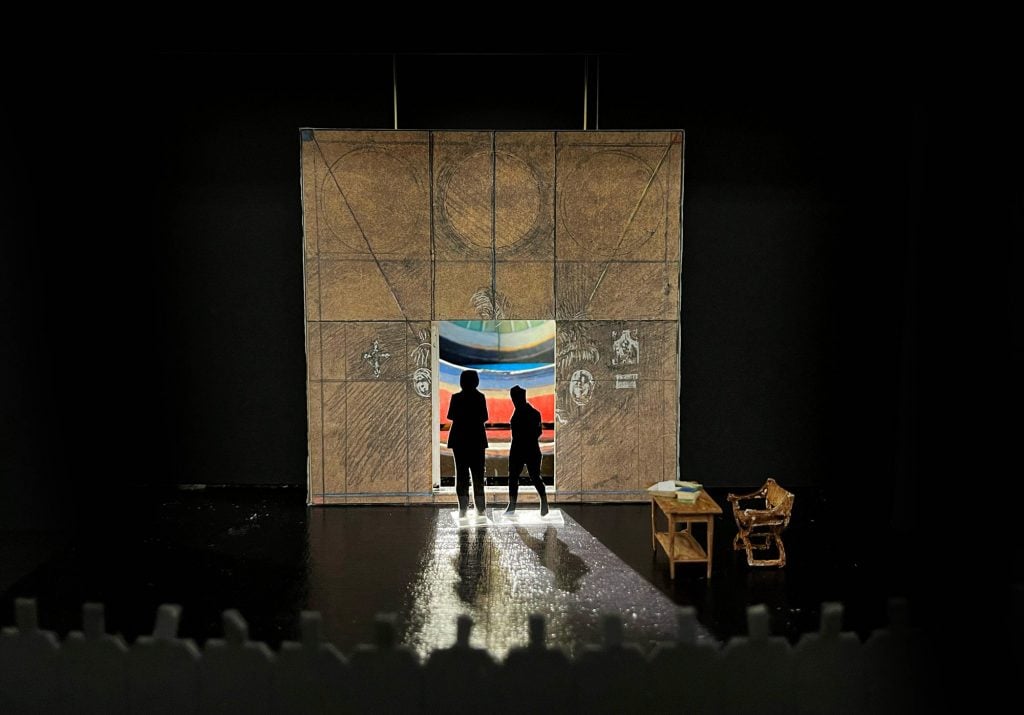
Set design for HILMA by Krit Robinson. Photo courtesy of the Wilma.
HILMA opens by tracing the highlights af Klint’s story, particularly her growing involvement with the theosophist movement. Her relationship with esotericist Rudolf Steiner is dramatized, as is her lifelong connection with artist Anna Cassel, with whom she established the Five, the spiritist group that performed séances and meditations. Following an intermission, the opera’s second act brings the audience into the Five’s spiritual processes before the third act offers an expanded perspective on af Klint’s legacy.
Each act offers a “distinct style,” Green told me, most notably the final segment, which she described as “meta-theatrical, with the actors playing actors talking about seeing the work at the Guggenheim and how it connects to their lives as artists.” The production features a local and regional cast, including Sarah Gliko, J Molière, Brett Ashley Robinson, Evan Spigelman, and Kristen Sieh as af Klint.
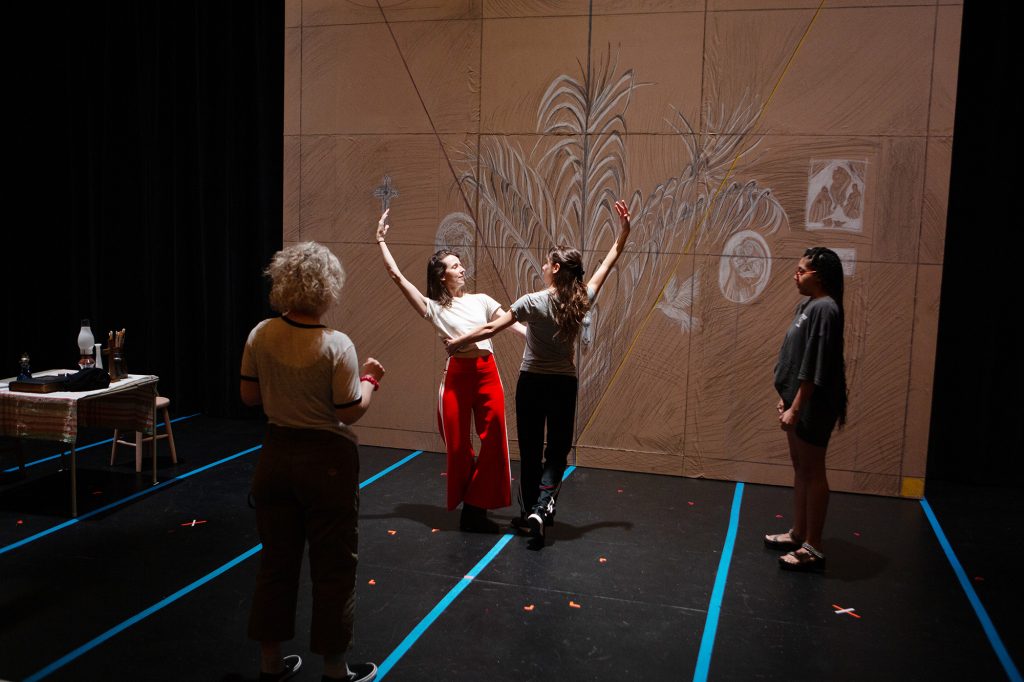
A rehearsal for HILMA, with (from left) Morgan Green, Kristen Sieh, Lisa Fagan, and J Moliere. Photo: Cat Bohnenberger.
To Scelsa, the medium of opera offered far heightened ways to convey af Klint’s life and art, more so than, say, a play could. She likened opera to painting, the music calling up for her how af Klint’s paintings made her feel. “We’re swept up,” she said. “It’s not intellectual; it’s not just about the words.”
The theatrical work also serves as a fine counterpoint to af Klint’s approach, Green pointed out. She noted how the painter created work for “an audience in the future” since the early 20th century had yet to catch up to her brand of abstraction. “And in the theater, the mandate is that you’re making work for people in the room. Theater demands that we’re in the present together—it’s immediate,” she said.
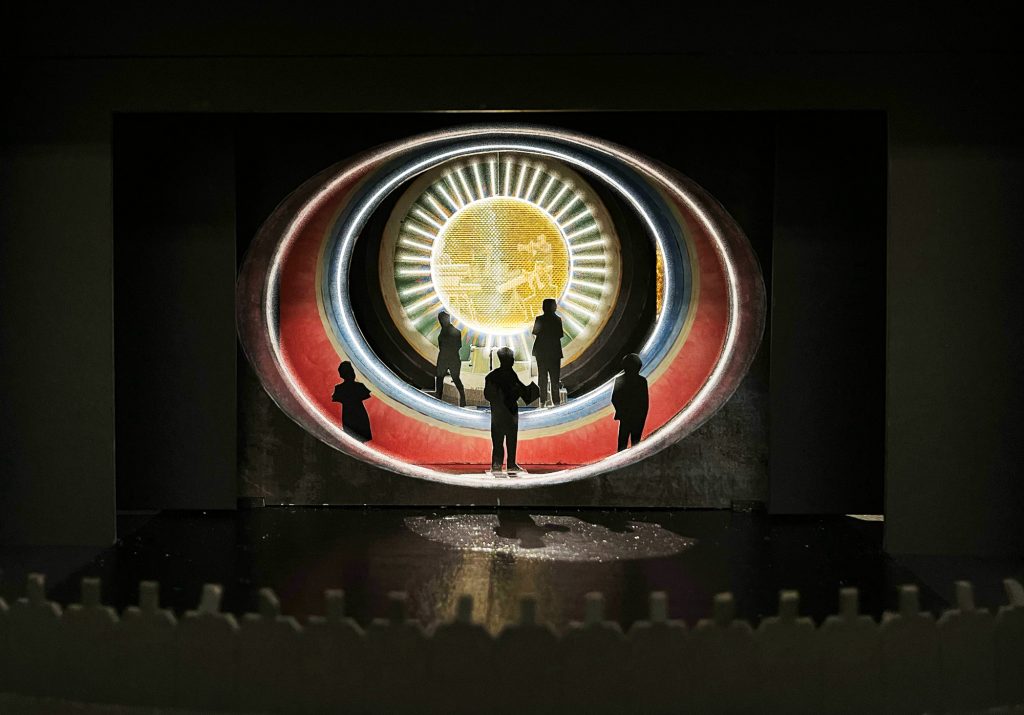
Set design for HILMA by Krit Robinson. Photo courtesy of the Wilma.
For this reason, the production opted not to include any of af Klint’s paintings in HILMA (though the sets by designer Krit Robinson take cues from her geometric forms). The opera is not intended as a historical account of the artist, after all, but to capture and channel a visceral feeling inspired by af Klint’s distinctive practice. “At the end of the day,” said Scelsa, “this art just makes you feel something.”
“We’re translating her art into the language of theater, using bodies and light and music and narrative,” Green added. “But we’re trying to take her story and her work, and make a new piece of art. This is its own new work.”
HILMA is running at the Wilma Theater, 265 S Broad Street, Philadelphia, Pennsylvania, June 4–23.





